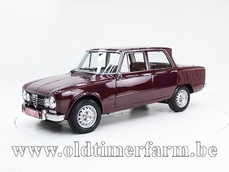Lotus Elan '92 1992
General description :
Very low mileage, mint condition Most expensive car in development for Lotus until the 90s Quick, agile and small sports car The Lotus Elan was built in two phases, from 1962 to 1975 and from 1989 to 1995. In the 21st century, Lotus attempted to continue the Elan story, though that did not go beyond designing a beautiful concept car. The Elan is a ‘vulnerable’ sports car that weighs barely a thousand kilograms, and that is its strength. The combination of a light four-cylinder engine, a lightweight body, and modest dimensions makes it an agile car that can give modern cars a run for their money. The first series of Elans was produced from 1962 to 1973 and was available in both roadster and coupe versions, with an optional hardtop. Among all Lotus cars, it was the first to be built on a steel chassis covered with durable and lightweight fiberglass panels. As a result, the car weighed only 680 kilograms, and it was even possible to buy it as a kit. Colin Chapman, Lotus’ founder, was a strong advocate for lightweight vehicles, and the Elan was the embodiment of his dream car. Moreover, the Elan was the first Lotus ever to be manufactured using a fiberglass and steel construction method. Given its almost cute dimensions, the Elan is a very agile car. Formula 1 designer Gordon Murray once admitted to being jealous that his own Formula 1 cars were never as nimble as the Lotus Elan, highlighting the sportiness of this little sports car. In 1967, the Elan +2 was introduced, and it was produced in parallel with the regular Elan until 1972. The +2 had a longer wheelbase, was wider, and could accommodate four people, although preferably two adults and two children, making it the ideal sixties family car for trendy parents. In 1975, the production of the +2 ceased, and there was a fourteen-year gap in the Elan lineup. In 1989 the Elan continued, following a similar approach but in a more modern guise. In 1986, Lotus came under General Motors' ownership, and to address financial challenges, they decided to develop an affordable sports car that revived the original concept of the Elan. This new Elan was built until 1995, after which the rights were sold to KIA, who breathed new life into the Elan until 1999. In 2013, a flashy concept car named Elan was introduced, but the production never started. M100 M100 is the code for the second generation of the Lotus Elan that was produced from 1989 to 1995, and in that same 1995 year, the rights were sold to KIA, who continued production until 1999. The M100 came in two versions: a turbocharged one and a naturally aspirated one, balancing each other out. At the time of development, it was the most expensive car Lotus had ever built, primarily intended for mass production, especially targeting the United States market. The car was front-wheel-drive, which might be considered unusual for a sports car, but its extremely light weight made front-wheel-drive a suitable choice, further enhancing its agility. The Lotus Elan is a sought-after classic car, making the hearts of many enthusiasts beat faster. Technical information: Body work Length (cm): 380 (150 inch) Width (cm): 174 (69 inch) Height (cm): 123 (48 inch) Wheelbase (cm): 225 (89 inch) Weight (kg): 1020 (2249 lbs) Mechanics Engine: transversal 1588 cc turbocharged front-engine Valve gear: 16, DOHC Fuel system: EMPI Gear box: 5-speed manual Transmission: FWD Left-steered power: 163 hp (121 kW) at 6600 t/m torque: 200 Nm at 4200 t/m Top speed: 220 km/h (137 mph)
1992 Lotus Elan '92 is listed for sale on ClassicDigest in Aalter by Oldtimerfarm for €35950.
Car Facts
Car type : Car Make : Lotus Model : Elan Model Version : '92 Engine size : 0.0 Model Year : 1992 Location : Aalter Vehicle Registration : Undefined
35950 €
People who viewed this Lotus Elan also viewed similar Lotus listed at ClassicDigest
Other cars listed for sale by this dealer
About Lotus Elan
The Lotus Elan is a British sports car that was produced by Lotus Cars from 1962 to 1973. It was designed by Lotus founder Colin Chapman and is considered a classic example of British sports car design.The Elan was powered by a 1.6-liter inline-four engine that produced up to 118 horsepower. It also featured advanced suspension and braking systems, with four-wheel independent suspension and disc brakes on all four wheels.
The Lotus Elan was known for its exceptional handling and performance, with a top speed of up to 120 mph and acceleration from 0 to 60 mph in as little as 7 seconds. Its lightweight fiberglass body and advanced suspension system made it a popular choice among sports car enthusiasts of the time.

























